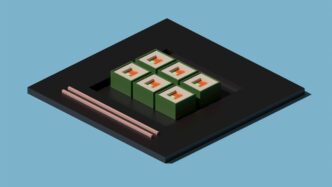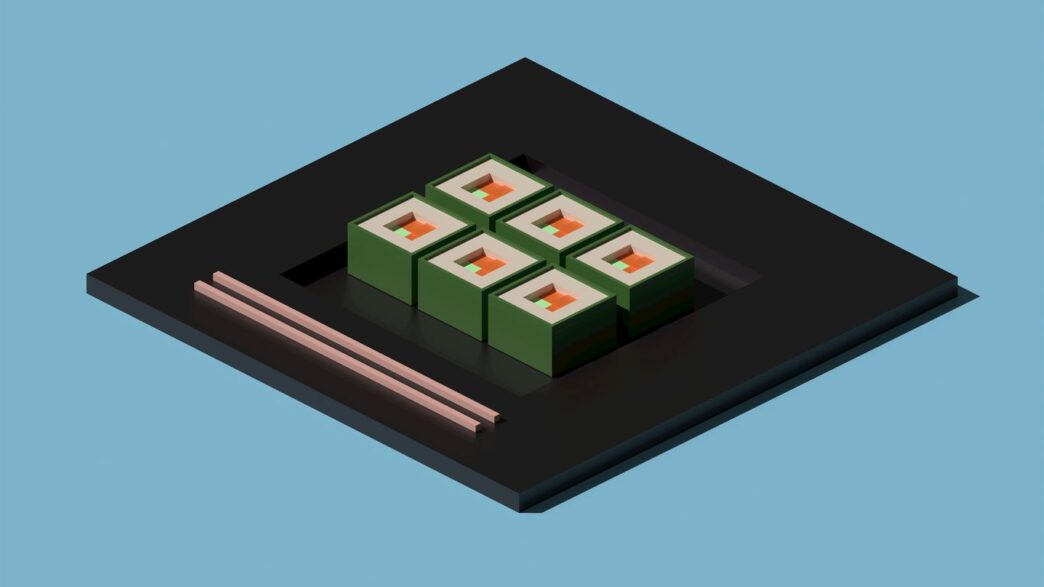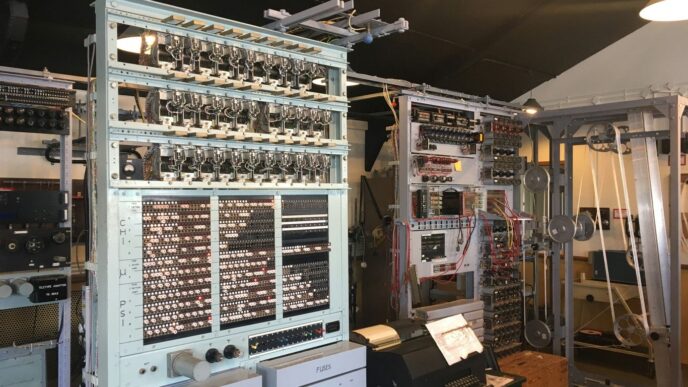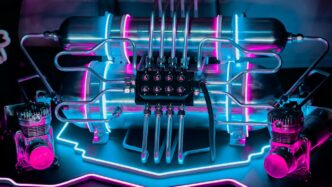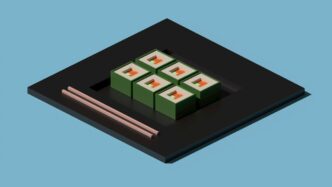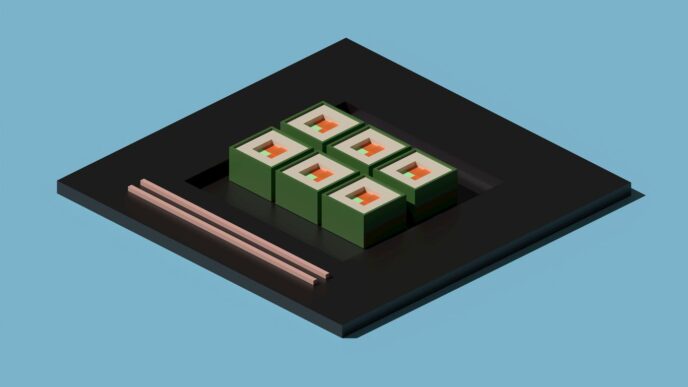Thinking about quantum computing? D-Wave is a big name in the game, but what about the actual d wave quantum computer cost? It’s not exactly something you pick up at your local electronics store. We’re talking about serious investment, whether you’re looking at their cloud services or thinking about buying a whole system. Let’s break down what goes into the price tag and what you’re really getting for your money.
Key Takeaways
- D-Wave’s quantum annealing computers are mainly for optimization problems, a niche they lead in. Their new Advantage2 system can handle more complex problems than before.
- Accessing D-Wave’s power is typically done through their Leap cloud service, costing around $25,000 per quarter for basic access. For heavy use, costs are based on the specific job.
- Buying a full D-Wave system is a major expense, running into millions of dollars, usually for government or research groups needing dedicated access.
- D-Wave’s approach, quantum annealing, is different from the gate-model used by giants like Google and IBM, focusing on specific problem types rather than universal computation.
- The company’s stock (QBTS) has seen significant movement, with recent news about its Advantage2 system outperforming supercomputers boosting investor interest and analyst targets.
Understanding D-Wave Quantum Computer Cost Structures
So, how much does it actually cost to get your hands on a D-Wave quantum computer, or at least use one? It’s not like popping down to the electronics store for a new laptop, that’s for sure. D-Wave has a couple of main ways people access their technology, and the price tag reflects that.
Leap Cloud Service Pricing Models
Most folks interact with D-Wave through their Leap cloud service. Think of it like renting time on the quantum computer. They have different plans, but a common one gets you access for a set period, usually a quarter. For about $25,000, you get licenses for a couple of developers and what they call "essentially unlimited time" on the computer. This is great for experimenting and running a lot of tests. It’s a way to get started without buying the whole farm, so to speak.
Full System Acquisition Costs
Now, if you’re a big company or a research institution and you want your own D-Wave system on-site, that’s a whole different ballgame. We’re talking about acquiring the actual hardware. The costs here are significantly higher, naturally, because you’re buying the physical machine. While D-Wave doesn’t always publicize these exact figures, it’s safe to assume we’re looking at millions of dollars. This option is for organizations that need dedicated, constant access and have the infrastructure to support it.
Production Run Cost Factors
When you move beyond just testing and start using D-Wave for actual, real-world production problems – like optimizing a massive supply chain or running complex financial models – the pricing can change again. D-Wave mentions they "charge by the application" for these production runs. This means the cost is based on how complex your specific problem is, how many variables it involves, and how much computational power it needs. So, a simpler optimization task might cost less than a highly intricate one that pushes the limits of the hardware. It’s a more tailored approach for ongoing, intensive use.
D-Wave’s Quantum Annealing Technology and Its Value
Optimization Problem Specialization
D-Wave’s approach to quantum computing is a bit different from what you might hear about from other big names in the field. Instead of aiming for a universal quantum computer that can do everything, D-Wave focuses on a specific type of problem: optimization. Think of it like having a specialized tool that’s incredibly good at one job, rather than a general-purpose tool that’s just okay at many. This specialization comes from their quantum annealing technology. It’s inspired by a metallurgical process where metals are heated and cooled to become stronger. In D-Wave’s machines, the variables in a problem are ‘heated up’ to explore many possibilities, then ‘cooled’ to settle into the best solution. This makes D-Wave’s systems particularly well-suited for tasks like figuring out the most efficient way to schedule resources or manage complex supply chains.
Advantage2: Expanding Problem Scope
The latest system, Advantage2, is a big step forward. It can handle more variables than previous versions, meaning it can tackle larger and more complex optimization problems. While earlier systems could manage problems with hundreds or thousands of variables, Advantage2 starts to open the door to problems with tens of thousands of variables. The goal is to eventually handle problems with millions of variables. This expanded capability means D-Wave’s technology can address a larger slice of the overall quantum computing market, especially in the optimization space, which is estimated to be a massive market on its own.
Energy Efficiency in Computation
One of the interesting side effects of D-Wave’s approach is its potential for energy efficiency. While not directly a cost factor for the user in terms of electricity bills, it points to a more sustainable way of performing complex calculations. For instance, there’s interest in using this technology for things like creating more energy-efficient blockchains. The idea is that by harnessing the power of quantum annealing for specific computational tasks, like those involved in proof-of-work, the energy required could be significantly less than with current methods. This focus on efficiency, even in specialized tasks, is a quiet but important aspect of their technological value.
Market Position and Competitive Landscape
D-Wave’s Unique Market Share
D-Wave has carved out a distinct niche in the quantum computing world. They’re not really playing the same game as companies focused on general-purpose quantum computers that use qubits to perform a wide range of calculations. Instead, D-Wave focuses on quantum annealing. This means they’ve become the go-to for specific types of problems, particularly those involving complex optimization. Think of it like having a specialized tool that’s incredibly good at one job, rather than a Swiss Army knife that can do many things okay. This specialization has allowed them to gain traction with businesses looking to solve real-world optimization challenges, like logistics or financial modeling, where finding the absolute best solution is key.
Distinguishing Annealing from Gate-Model
It’s important to get this difference straight. Most of the quantum computing buzz you hear about involves "gate-model" quantum computers. These are the ones that use qubits to perform complex algorithms and are aiming for broad computational power, often chasing "quantum supremacy" for a wide variety of tasks. D-Wave, on the other hand, uses quantum annealing. This approach is designed to find the lowest energy state of a system, which directly translates to finding the optimal solution for optimization problems. It’s a different path to quantum advantage, and while it might not be as versatile as gate-model computing for all tasks, it’s already proving its worth for specific, high-value problems.
Here’s a quick breakdown:
- Gate-Model Quantum Computing:
- Aims for general-purpose computation.
- Uses qubits to run complex algorithms.
- Still largely in the research and development phase for many applications.
- Quantum Annealing (D-Wave’s focus):
- Specializes in optimization problems.
- Finds the best solution by settling into the lowest energy state.
- Has practical, real-world applications available now.
Industry Giants and D-Wave’s Stance
The quantum computing landscape is getting crowded, with tech titans like Google, IBM, and Microsoft investing heavily in gate-model systems. These companies have massive resources and are pushing the boundaries of what’s possible with quantum computation. D-Wave, while smaller, isn’t trying to directly compete with them on every front. Their strategy is to continue leading in the quantum annealing space, building out their hardware and cloud services for customers who need solutions to optimization problems today. They’ve demonstrated that their systems can outperform classical computers on certain tasks, and they’re focused on expanding that advantage. It’s less about a head-to-head race and more about occupying and expanding their specialized territory.
Customer Adoption and Real-World Applications

It’s one thing to talk about quantum computers in theory, but it’s another to see them actually being used to solve real problems. D-Wave’s approach, focusing on quantum annealing for optimization, has found its way into some pretty interesting places.
Leading Corporations Utilizing D-Wave
Lots of big names are already getting their hands dirty with D-Wave’s technology. Companies like MasterCard and NTT-Docomo, a major Japanese telecom provider, are on the list. They’re using the Leap cloud service to tackle complex issues. This isn’t just about playing around; it’s about finding practical solutions to business challenges. Think about it: these are companies dealing with massive amounts of data and intricate operations every single day.
Impact on Supply Chain and Efficiency
In today’s world, supply chains are a mess, and businesses are feeling the pinch. D-Wave’s machines are particularly good at optimization problems, which is exactly what’s needed to untangle these knots. Figuring out the best way to route deliveries, manage inventory, or schedule resources can save companies a ton of money and headaches. It’s about making things run smoother and faster, especially when global trade gets complicated. D-Wave’s technology is showing up in industrial deployments, like with BASF, demonstrating its commercial viability.
Government and Research System Needs
It’s not just corporations. Government agencies and research institutions are also big users. They often need to own the full system, especially when they’re exploring new types of computational tasks or need to integrate quantum systems closely with existing supercomputers. This allows them to really dig deep into problems that are beyond the reach of classical computers. They’re looking at everything from materials science to complex simulations, pushing the boundaries of what’s possible.
The Financial Narrative of D-Wave Quantum
When we look at D-Wave, it’s a story that’s still being written, especially when it comes to the money side of things. Analysts are watching closely, and there’s a lot of buzz, but it’s not always a straightforward picture. The company has been making strides, particularly with its quantum annealing technology, which is really good at solving specific types of problems, like optimization. Think about figuring out the best way to route delivery trucks or manage a complex supply chain – that’s where D-Wave shines.
Analyst Expectations and Stock Performance
Right now, the stock market’s reaction to D-Wave has been a bit of a rollercoaster. There’s definitely excitement about the future of quantum computing, and D-Wave is seen as a key player. Some analysts have been revising their outlooks, pointing to the company’s progress and its unique position in the market. However, it’s important to remember that this is a high-growth, high-risk area. For investors comfortable with high risk, a small allocation to D-Wave represents a speculative bet on the future of quantum computing [133e]. It’s not for everyone, and understanding that volatility is part of the game is key.
Revenue Projections and Growth Drivers
Looking at the numbers, D-Wave has shown some impressive revenue growth lately, partly thanks to sales of their quantum hardware. They’ve even put out some ambitious revenue forecasts. A big part of their growth strategy seems to be tied to their cloud service, Leap, where customers can access their quantum computers. They also charge for production runs, with the cost depending on how complex the job is. The Advantage2 system, which can handle more variables, is expected to open up even more possibilities and drive future revenue.
Investor Sentiment and Market Buzz
The general feeling around D-Wave among investors is a mix of anticipation and caution. There’s a lot of talk about their technological advancements and how they’re carving out a niche in the quantum computing landscape. However, profitability is still a challenge, with some financial metrics showing negative territory. This means that while the company is growing and innovating, turning that into consistent profit is the next big hurdle. It’s a classic tech growth story, where the focus is on expansion and market capture, with the expectation that profitability will follow as the market matures.
Advancements in D-Wave’s Quantum Hardware
D-Wave has been busy pushing the boundaries of what their quantum computers can do. They recently rolled out their sixth-generation system, the Advantage2, and it’s a pretty big deal. This new machine is designed to tackle optimization problems with significantly more power than its predecessors.
The Advantage2 System Unveiled
The Advantage2 represents a major step forward. It’s not just a minor upgrade; the company claims it offers performance that’s orders of magnitude better. This means it can handle a wider range of complex tasks that were previously out of reach. Think of it like going from a bicycle to a sports car – you can just get so much more done, and so much faster.
Qubit Connectivity and Coherence Time
So, how did they achieve this leap? A big part of it comes down to the hardware itself. The Advantage2 features more connections between its qubits. Each qubit now has 20 connections to other qubits, up from 15 in the previous Advantage system. This increased connectivity helps to double the "coherence time." This is the window of time where the quantum calculations can actually happen before the delicate quantum state collapses. A longer coherence time means the machine can get more accurate answers, and it can get them much faster – potentially thousands of times faster than before.
Demonstrating Beyond-Classical Computation
What’s really exciting is that D-Wave is claiming their Advantage2 system achieves what’s often called "quantum supremacy" for certain problems. This is a highly debated term, but essentially, it means the quantum computer can perform a calculation that would be practically impossible for even the most powerful classical supercomputers to complete in a reasonable amount of time. For D-Wave, this means their specialized annealing approach is proving its worth for specific, hard problems, showing that quantum technology can indeed do things classical computers simply can’t.
Wrapping It Up
So, what’s the big takeaway when it comes to D-Wave’s quantum computer costs? It’s not exactly a simple price tag you can slap on a product. For businesses looking to tap into this cutting-edge tech, access often comes through their cloud service, Leap, with costs starting around $25,000 per quarter for basic access. If you’re a big corporation needing a whole system, you’re looking at multi-million dollar investments. It’s clear D-Wave is pushing boundaries, especially with their Advantage2 system, tackling complex optimization problems that classical computers just can’t handle. While the price point might seem steep, the potential for solving massive, real-world challenges in areas like supply chains and materials science is what drives the value. It’s a hefty investment, for sure, but for companies aiming to get ahead in a competitive landscape, it might just be the ticket.
Frequently Asked Questions
What is a D-Wave quantum computer and how is it different?
A D-Wave quantum computer is a special kind of computer that uses quantum mechanics to solve really hard problems. Unlike regular computers, D-Wave uses a method called ‘quantum annealing.’ Think of it like heating up metal and letting it cool slowly to make it stronger. D-Wave’s computers do something similar with problems, trying out many solutions at once to find the best one, especially for tasks like planning or managing resources.
How much does a D-Wave quantum computer cost?
Getting access to D-Wave’s quantum computers can happen in a few ways. You can use their Leap cloud service, which is like renting time on the computer, and it costs about $25,000 for three months for a couple of users. If a company wants to buy a whole system for themselves, it can cost several million dollars. For big jobs, they also charge based on how tricky the problem is.
What kind of problems are D-Wave computers good at solving?
D-Wave computers are amazing at ‘optimization’ problems. These are problems where you have lots of different parts or choices, and you need to find the very best way to put them together. Examples include figuring out the fastest delivery routes, managing a complex supply chain, or scheduling tasks efficiently. Their newest computer, Advantage2, can handle even bigger and more complex optimization puzzles.
Who is using D-Wave’s quantum computers?
Many big companies are already using D-Wave’s technology to improve their work. Companies like MasterCard and major phone companies are using it. Governments and research groups also use these systems to explore new scientific ideas. They access these powerful machines through D-Wave’s online service, Leap.
What’s new with the Advantage2 system?
The Advantage2 is D-Wave’s latest and most powerful quantum computer. It’s much faster and better than older versions. It has more connections between its quantum bits (qubits), which helps it solve problems more accurately and quickly. D-Wave says this new system can do things that even the most powerful regular supercomputers can’t, and it uses much less energy to do it.
Is D-Wave the only quantum computing company?
No, D-Wave isn’t the only company working on quantum computers. There are other companies using different approaches, like the ‘gate model,’ which aims to build a universal quantum computer. D-Wave focuses on ‘quantum annealing,’ which is specialized for optimization problems. While other big tech companies are also developing quantum technology, D-Wave believes its annealing approach is very useful for today’s business needs.

